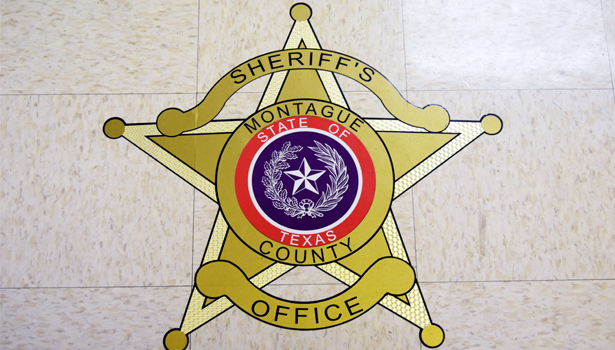NEWS
Spring forecast for the United States

AccuWeather Global Weather Center – February 2, 2021 – Punxsutawney Phil has emerged from his burrow and has declared six more weeks of winter, but that prognostication may not come to fruition across the entire U.S.
Winter weather has reached every corner of the country this season, ranging from waves of early-season storms across the entire West Coast to snow and ice in the Southeast and the first blizzard in years for part of New England. While there is still plenty of winter weather in the pipeline, the light is starting to appear at the end of the tunnel with the arrival of spring right around the corner.
Meteorological spring officially begins on Tuesday, March 1, and astronomical spring begins on Sunday, March 20, but the changing of the seasons may not translate to the abrupt end of cold and snowy weather across the United States.
AccuWeather’s team of long-range forecasters, led by Senior Meteorologist Paul Pastelok, has been analyzing weather patterns around the globe to make a forecast for the coming months. In crafting a long-range forecast, Pastelok and his team employ a much different method than what’s relied upon to make a short-term forecast for the next three to five days.
One way that the team of forecasters forged the spring forecast is with the help of analogs. Analogs are years in the past when the weather patterns around the globe were similar to what is currently happening. Studying the past gives forecasters clues to what may unfold in the future.
Accuweather.com has a region by region breakdown of its spring forecast.
Drought to maintain grip on western US
The back-and-forth weather pattern along the West Coast this winter will persist into the spring, including the potential for late-season storms across California.
The winter started off strong for the drought-stricken West Coast with waves of storms unloading widespread rain and yards of mountain snow across Washington, Oregon and California. This pattern broke in January, raising concerns once again about whether the drought would worsen before conditions improve.
The stormy pattern is projected to resume later in February and into March, according to Pastelok, delivering much-needed precipitation to the region. However, this will not be a drought-ending scenario that many are hoping for, especially if the storms take a more northerly track. This would direct the storms into the Pacific Northwest and away from Southern California and the interior Southwest.
“There’s still an opportunity for a little bit of extra rain through April to contribute more to water reservoirs for the late spring and summer,” Pastelok said.
As of Jan. 27, 2022, 21% of the western U.S. was experiencing extreme drought and 4% of the region was under exceptional drought, according to the U.S. Drought Monitor. This is a reduction from one year prior when more than 46% of the region was experiencing an extreme drought and 24% was under exceptional drought.
Despite this improvement, most of the region is still experiencing long-term drought hardships.
The worst of the drought conditions through the spring is projected to focus on the Great Basin, Four Corners and into the High Plains. This means that conditions could get worse before they get better, including the water tables that feed into Lake Mead, which in 2021 hit its lowest level since the construction of the Hoover Dam.
These meteorological breadcrumbs have indicated that this spring could feature unusually late winter storms, both along the East Coast and West Coast, and even the development of an out-of-season tropical system.
Some moisture could make it into the interior Southwest if a few storms take a more southerly track in March and even as late as April, but it will not be enough to alleviate the long-term drought, Pastelok said.
As a result, much of the region will experience a warmer-than-normal spring, including Phoenix, Las Vegas and Albuquerque, New Mexico.
Last year, Phoenix kicked off April with 13 consecutive 90-degree days. While such a feat is hard to duplicate in back-to-back years, the anticipated warmth cannot rule out another extended streak of 90-degree days in the Valley of the Sun.
The early arrival of spring warmth across the interior Southwest will be followed up by a summer preview in May before the official start of meteorological summer on June 1.
T
NEWS
Lake Amon G. Carter to reopen on June 20
NEWS
Nocona City Council approves NEDC requests

The Nocona City Council approved a trio of Nocona Economic Development Corporation requests and considered infrastructure work questioned by a city council.
Councilors met on June 10. Two of the NEDC requests had already been presented with the timeclock for comment started. With that time limit over, the requests were finalized.
The Type A and B Boards will spend $19,225 at the Indian Oaks Golf Club for equipment, aerifying and top dressing the greens and batteries for rental carts. It also will expend $20,000 to the Nocona Chisholm Trail Rodeo Arena Committee to build new concrete bleachers, railings, fence and platform.
The third NEDC request is a new one related to a Type B board loan of $200,000 to Amy and Chris Nunneley for a new apartment and office construction project.
Read the full story in the Thursday Bowie News.
NEWS
Bowie News mail delivery delayed due to holiday

Due to the June 19 Juneteenth federal holiday the U.S. Post Office will be closed, which moves the Thursday Bowie News to a Friday delivery date
It will be available in the stores at its regular time.
-

 NEWS3 years ago
NEWS3 years ago2 hurt, 1 jailed after shooting incident north of Nocona
-

 NEWS2 years ago
NEWS2 years agoSuspect indicted, jailed in Tia Hutson murder
-

 NEWS2 years ago
NEWS2 years agoSO investigating possible murder/suicide
-

 NEWS2 years ago
NEWS2 years agoWreck takes the life of BHS teen, 16
-

 NEWS2 years ago
NEWS2 years agoMurder unsolved – 1 year later Tia Hutson’s family angry, frustrated with no arrest
-

 NEWS2 years ago
NEWS2 years agoSheriff’s office called out to infant’s death
-

 NEWS2 years ago
NEWS2 years agoBowie Police face three-hour standoff after possible domestic fight
-

 NEWS3 years ago
NEWS3 years agoDriver stopped by a man running into the street, robbed at knifepoint







